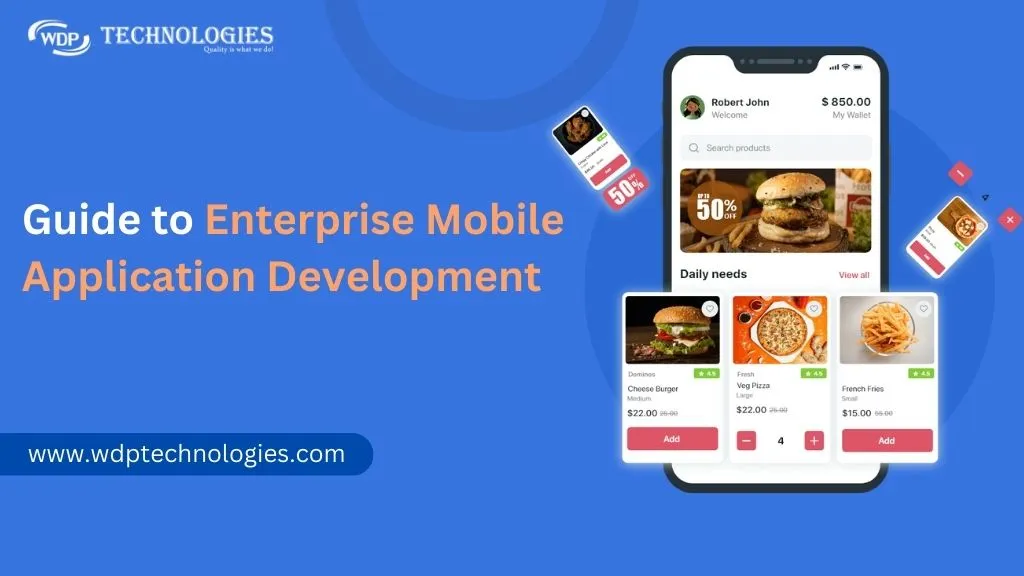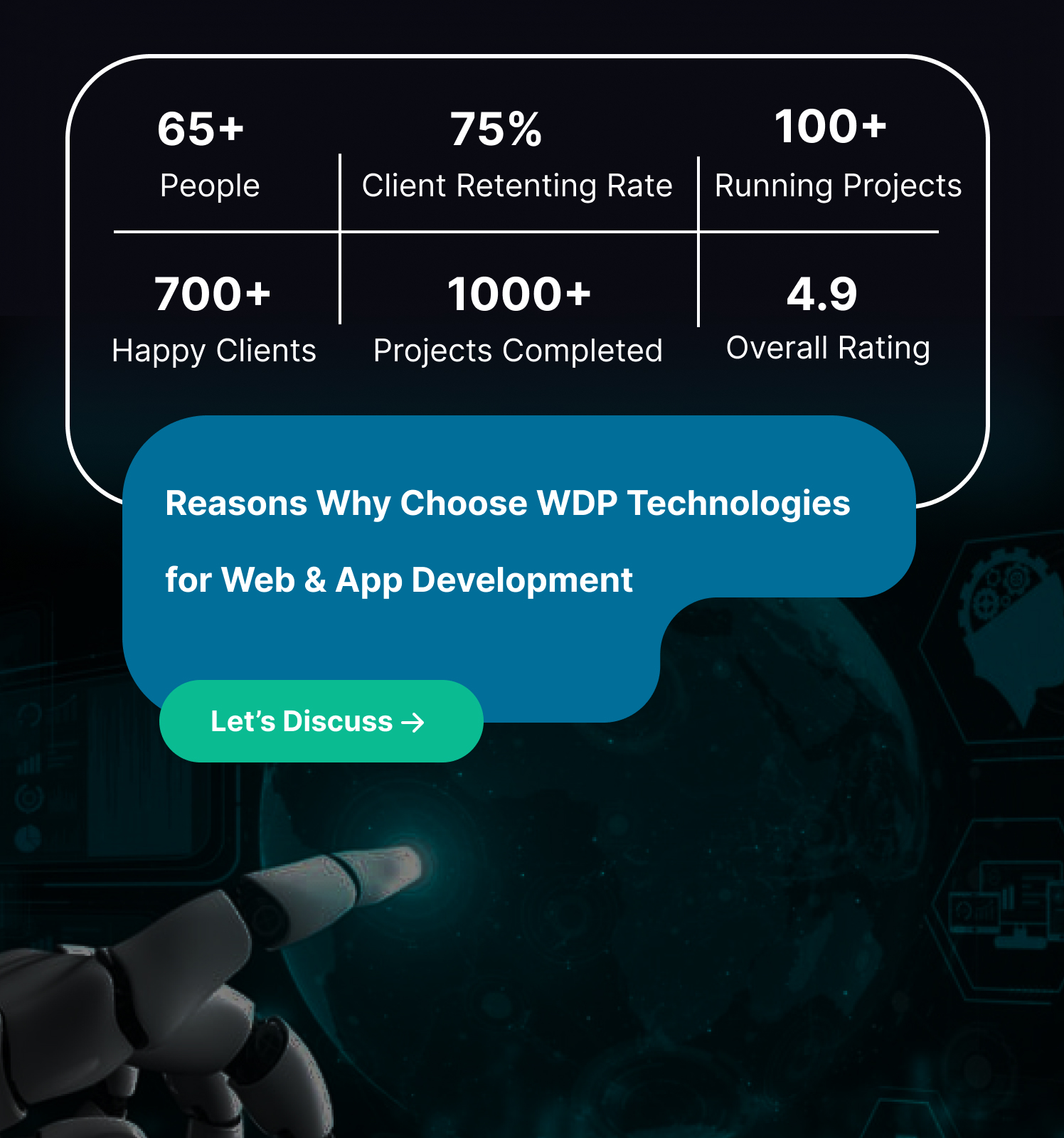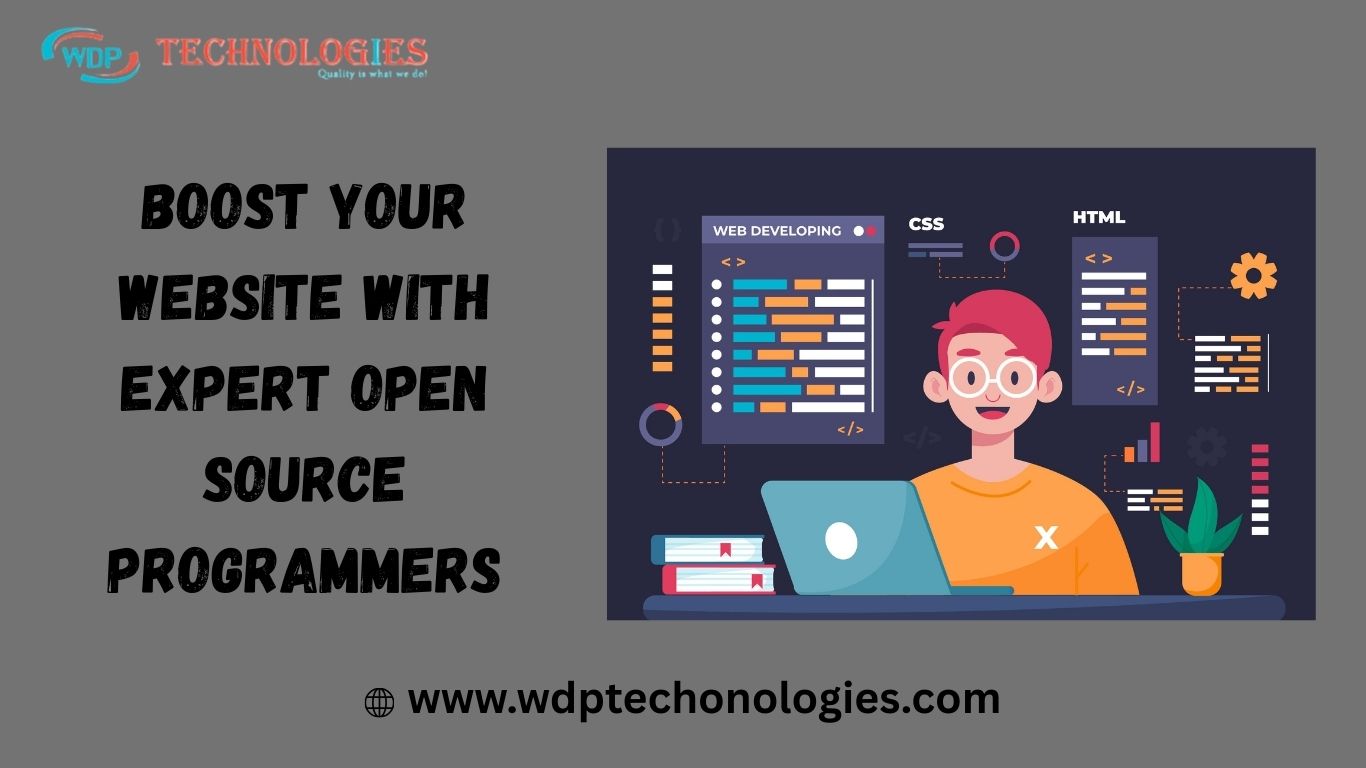In the ever-evolving landscape of business and technology, Enterprise Mobile Application Development stands out as a critical catalyst for organizational growth and adaptability. These applications are designed to enhance business operations, streamline internal processes, and facilitate seamless communication, both within the organization and with external stakeholders.
As we start digging into the details of Enterprise Mobile Application Development in this guide, let’s break it down in simpler terms, we will explore not only the technical aspects of creating these applications but also the strategic considerations that underpin their success. From identifying key objectives to navigating the development lifecycle, our journey will provide insights and guidance for organizations seeking to harness the power of mobile technology to drive efficiency and innovation.
Need for Enterprise Mobile Apps: Addressing Business Realities
In the dynamic world of business, the demand for Enterprise Mobile Apps has become increasingly apparent due to several crucial factors. The Enterprise Mobile Application Development Platform market industry is projected to grow from USD 11.93 Billion in 2023 to USD 73.89 Billion by 2032. Let’s explore the reasons behind the growing necessity of these specialized applications:
1) Changing Business Dynamics:
Businesses today operate in a fast-paced environment where change is constant. Enterprise Mobile Apps help companies adapt to these shifts by providing flexibility and agility. Whether it’s adjusting to new market trends, accommodating remote work, or responding to customer needs swiftly, these apps serve as dynamic tools that can evolve with the ever-changing business landscape.
2) Growing Mobile User Base:
With the widespread use of smartphones, more and more people are relying on mobile devices for work-related tasks. Enterprise Mobile Apps tap into this trend, ensuring that businesses can connect with their employees, partners, and customers effectively through the devices they use daily. This shift toward a mobile-centric world makes these apps not just a convenience but a strategic necessity.
3) Competitive Edge in the Market:
In today’s competitive marketplace, staying ahead is crucial. Enterprise Mobile Apps provide a distinctive advantage by offering unique functionalities that set businesses apart. Whether it’s providing a superior user experience, offering innovative features, or simply being more accessible, these apps contribute significantly to an organization’s competitive positioning in the market.
4) Improved Productivity & Collaboration:
One of the primary reasons for the surge in Enterprise Mobile App adoption is the substantial impact on employee productivity and collaboration. These apps streamline workflows, automate routine tasks, and facilitate seamless communication among team members. By providing employees with tools accessible at their fingertips, businesses witness a boost in overall efficiency and collaboration, leading to enhanced productivity levels.
Key Considerations Before Enterprise Mobile Application Development:
Before diving into the Enterprise Mobile Application Development process, it’s crucial to lay down a solid foundation. Here are the key considerations that should be carefully examined and addressed:
1) Identifying Business Objectives:
Understanding why the app is being developed is the first and foremost consideration. What are the specific goals and objectives that the mobile app aims to achieve for the business? Whether it’s improving internal processes, enhancing customer engagement, or increasing operational efficiency, a clear definition of business objectives is essential to guide the development process.
2) Understanding Target Audience:
Knowing who will be using the app is paramount. The features, design, and functionality should align with the preferences and needs of the intended users. Whether it’s employees within the organization, business partners, or end customers, a deep understanding of the target audience ensures that the app delivers value and resonates with its users.
3) Security and Compliance:
Security is non-negotiable, especially when dealing with enterprise-level applications that may handle sensitive data. Assessing potential risks and implementing robust security measures is crucial. Additionally, ensuring compliance with industry regulations and data protection laws is a fundamental consideration. This includes data encryption, secure authentication processes, and measures to protect against potential breaches.
4) Integration with Existing Systems:
Most large enterprises already have established systems and processes in place. The new mobile app should seamlessly integrate with these existing systems to avoid disruptions and enhance overall efficiency. This requires a thorough evaluation of the current infrastructure and careful planning to ensure smooth interoperability between the app and the existing technology stack.
5) Budgetary Constraints:
Developing a mobile app involves financial investments, and it’s essential to set realistic budgetary constraints. This includes not only the initial development costs but also considerations for ongoing maintenance, updates, and potential scalability. Balancing the desired features with the available budget is crucial for a successful and sustainable app development project.
Enterprise Mobile Application Development Process: Navigating Path to Success
As we embark on the journey of developing an Enterprise Mobile App, understanding the various stages of the development process is crucial. Let’s explore each step in detail:
1) Choosing Right Development Approach:
The first decision in the development process is selecting the most suitable development approach. Native apps are tailored for specific platforms (like iOS or Android), hybrid apps are a blend of web and native elements, while cross-platform apps are designed to work on multiple platforms. The choice depends on factors such as target audience, budget, and desired functionalities.
2) Selecting Appropriate Technology Stack:
Once the development approach is chosen, selecting the right technology stack follows. This includes choosing the programming languages, frameworks, and tools that align with the app’s requirements. The technology stack influences the app’s performance, scalability, and maintenance.
3) Wireframing and Prototyping:
Before diving into the actual development, creating wireframes and prototypes helps visualize the app’s structure and functionality. This stage involves outlining the basic layout and navigation to ensure that everyone is on the same page before moving forward.
4) User Interface & User Experience Design:
UI and UX design are pivotal in creating an engaging and user-friendly experience. This step involves designing the visual elements, layout, and overall aesthetics of the app (UI), as well as focusing on the user’s overall interaction and satisfaction with the app (UX).
5) Backend Development and API Integration:
The backend is the engine that powers the app. This stage involves developing the server, database, and application logic. Additionally, integrating APIs (Application Programming Interfaces) ensures smooth communication between the app and external services or data sources.
6) Frontend Development and Coding:
Frontend development involves bringing the app’s visual elements to life. This is where the user interacts with the app. Developers write the code for the user interface, implement features, and ensure the app is responsive and visually appealing.
7) Testing Strategies:
Thorough testing is critical to ensure the app functions as intended. Unit testing assesses individual components, integration testing checks how different parts work together, and user acceptance testing involves real users validating the app’s usability.
8) Deployment and App Store Submission:
Once testing is successful, the app is ready for deployment. This involves making the app available to users through app stores or enterprise distribution channels. App Store submission (for platforms like Apple App Store or Google Play) requires adherence to specific guidelines and standards.
Security Measures: Safeguarding the Core of Enterprise Mobile Apps
Ensuring the security of an Enterprise Mobile App is paramount to protect sensitive data and maintain the trust of users. Let’s delve into the essential security measures that should be implemented throughout the app’s lifecycle:
1) Data Encryption:
Data encryption acts as a shield for information transmitted between the app and servers. By converting sensitive data into unreadable code, even if intercepted, it remains unintelligible. Employing robust encryption algorithms ensures the confidentiality and integrity of data, a crucial safeguard against unauthorized access.
2) Authentication and Authorization:
Authentication verifies the identity of users accessing the app, ensuring that only authorized individuals can use specific features or access certain data. Authorization, on the other hand, defines the level of access granted to authenticated users. Implementing strong authentication mechanisms, such as multi-factor authentication, and defining granular authorization controls contribute to a robust security posture.
3) Secure API Integrations:
Many Enterprise Mobile Apps rely on external services and APIs to enhance functionality. Ensuring the security of these integrations is critical. Secure API integrations involve using secure communication channels, validating input data, and implementing proper access controls. Regularly updating and patching APIs also helps mitigate potential vulnerabilities.
4) Regular Security Audits and Updates:
Security is an ongoing process, and regular security audits are vital for identifying and addressing potential vulnerabilities. Conducting security audits involves reviewing the app’s code, configurations, and infrastructure to detect weaknesses. Additionally, promptly applying security updates and patches is crucial to safeguard against emerging threats. Regularly updating the app ensures that it stays resilient against evolving security risks.
User Adoption Strategies: Fostering Engagement and Success
User adoption is a critical phase in the lifecycle of an Enterprise Mobile App. Successful adoption ensures that the app becomes an integral part of users’ workflows. Here are key strategies to enhance user adoption:
1) Training and Onboarding:
Investing in effective training and onboarding processes is essential to familiarize users with the app’s features and functionalities. This not only reduces the learning curve but also empowers users to leverage the app to its full potential. Providing accessible training materials, conducting workshops, and offering ongoing support contribute to a smooth onboarding experience.
2) User Feedback & Iterative Improvements:
User feedback is invaluable for understanding how the app is performing in real-world scenarios. Establish mechanisms for users to provide feedback easily. Regularly collecting and analyzing user feedback helps identify pain points and areas for improvement. Implementing iterative improvements based on user input ensures that the app evolves to meet changing needs and remains user-centric.
3) Marketing and Communication:
Effective marketing and communication strategies play a pivotal role in driving user adoption. Clearly communicate the value proposition of the app, highlighting how it addresses specific pain points and improves user workflows. Utilize internal communication channels to create awareness and excitement around the app. Regularly update users on new features, improvements, and any upcoming changes to keep them engaged and informed.
Case Studies: Learning from Real-world Experiences
Learning from both successful and unsuccessful enterprise mobile app implementations provides invaluable insights into the dynamics of this complex process. Let’s explore case studies in each category:
a) Successful Enterprise Mobile App Implementations:
🔹Salesforce Mobile App: Salesforce, a leader in customer relationship management, successfully implemented a mobile app that empowered sales teams to access critical customer data on the go. The app streamlined communication, improved collaboration, and enhanced overall productivity, resulting in increased sales and customer satisfaction.
🔹Microsoft Teams: Microsoft’s Teams app revolutionized remote collaboration. By providing a seamless platform for communication, file sharing, and project collaboration, Teams became an essential tool for remote and hybrid work environments. Its success lies in its user-friendly interface and integration with other Microsoft Office tools.
Key Takeaways from Successful Implementations:
🔹User-Centric Design: Prioritize user experience to ensure the app meets users’ needs and preferences.
🔹Seamless Integration: Successful apps seamlessly integrate with existing workflows and systems.
🔹Continuous Improvement: Regular updates and improvements based on user feedback contribute to sustained success.
b) Lessons Learned from Failures:
🔹Quibi: Despite significant financial investment, Quibi, a short-form video streaming app, failed to gain traction. The app’s downfall was attributed to a lack of understanding of user behavior and preferences, coupled with fierce competition in the streaming market.
🔹Google+: Google’s attempt at a social networking platform, Google+, faced challenges in attracting and retaining users. Privacy concerns and the dominance of other social media platforms contributed to Google+ being ultimately shut down.
Key Lessons from Failures:
🔹User Research is Crucial: Understanding user behavior and preferences is paramount for success.
🔹Addressing Market Needs: Failed apps often fall short of addressing genuine market needs or face intense competition without differentiation.
🔹Adaptability and Flexibility: Being able to pivot based on market feedback is crucial for long-term viability.
By studying both successful and unsuccessful case studies, businesses can gain valuable insights into the factors that contribute to app success and those that lead to failure. These real-world examples provide a roadmap for making informed decisions throughout the enterprise mobile application development journey.
Future Trends in Enterprise Mobile Application Development:
As technology continues to evolve, the future of enterprise mobile application development is marked by exciting trends that promise to transform the way businesses operate. Let’s explore the upcoming trends in this dynamic field:
1) AI and ML Integration:
The integration of Artificial Intelligence (AI) and Machine Learning (ML) in enterprise mobile apps is set to revolutionize decision-making processes. Predictive analytics, intelligent automation, and personalized user experiences will become standard features. AI-powered chatbots and virtual assistants will enhance customer support and streamline internal operations.
2) IOT in Enterprise Apps:
The Internet of Things (IoT) will play a pivotal role in connecting devices and systems within enterprises. Mobile apps will serve as central hubs for monitoring and controlling IoT devices, optimizing processes, and improving efficiency. This integration will be particularly beneficial in industries such as manufacturing, logistics, and healthcare.
3) PWAs and Instant Apps:
Progressive Web Apps (PWAs) and Instant Apps will redefine the user experience. PWAs, offering the best of web and app capabilities, will provide seamless offline access and faster loading times. Instant Apps, on the other hand, enable users to access app features without installing the complete app, reducing friction and enhancing user engagement.
4) AR and VR Applications:
AR and VR technologies are poised to create immersive and interactive experiences within enterprise mobile apps. From virtual training simulations to augmented maintenance procedures, these applications will enhance training, collaboration, and visualization. Industries like education, healthcare, and manufacturing will benefit significantly from AR and VR integration.
Also Read: Free Intermittent Fasting Apps
Conclusion
Enterprise Mobile Application Development is not merely a technological endeavor; it is a strategic imperative for businesses looking to thrive in a digital era. By staying informed, embracing innovation, and weaving together the threads of thoughtful planning, user-centric design, and cutting-edge technology, organizations can craft mobile applications that not only meet current needs but also propel them into a future of sustained success and growth.
As businesses continue to navigate the dynamic landscape of enterprise mobility, this guide serves as a compass, pointing towards the opportunities that lie ahead and guiding the way to a future marked by innovation, efficiency, and strategic excellence. Contact us for mobile app development.












